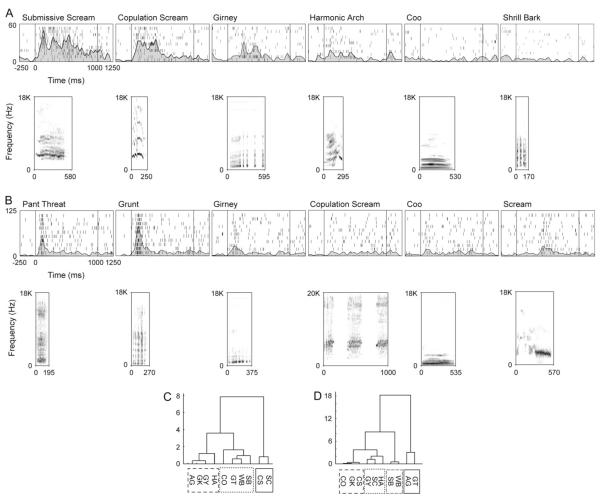Figure 3.
Vocalization responsive neurons in VLPFC. The responses to 5 species-specific vocalizations are shown for 2 example neurons in (A) and (B). The neural response is depicted and the spectrogram for the corresponding vocalization stimulus, which evoked the given response is shown below the raster/spike density plot. The vocalization call type is indicated at the top of each panel. The vocalization onset time was at time 0. The cell in (A) had a response to submissive screams (SC) and to copulation screams (CS). This is also indicated in the dendrogram of the mean response to all 10 call types shown in (C). The cell in (B) responded best to pant threats and grunts. The dendrogram for this cell is shown in (D) and indicates a similar response to the acoustically similar, but functionally different, pants (AG) and grunts (GT). Our data indicated that prefrontal neurons respond with a similar firing rate to calls that have similar acoustic features.

